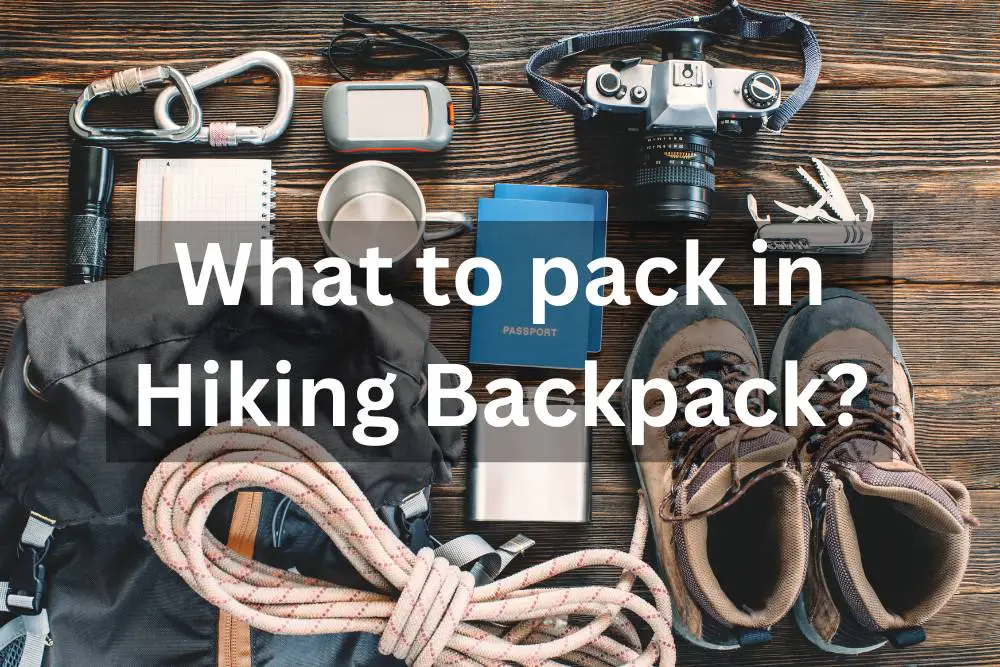Whether you’re planning a short day hike or a multi-day trek through the wilderness, packing the right gear in your hiking backpack is essential for a safe and enjoyable hiking experience.
But with so many different types of hikes and varying weather conditions, it can be challenging to know what to pack.
In this guide, we’ll cover the essentials for every type of hike, so you can hit the trails with confidence.
Contents
Day Hikes
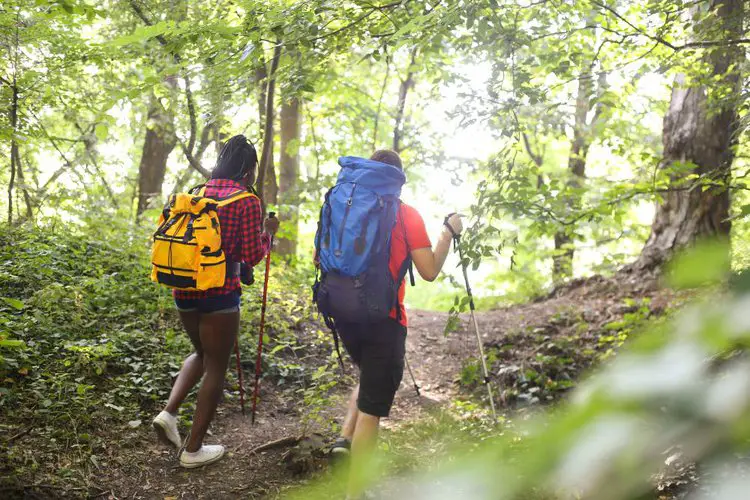
For a short day hike, you’ll want to pack a lightweight backpack with enough space to carry your essentials. Here’s what we recommend bringing:
- Water – Bring at least 1-2 liters of water per person, depending on the length and difficulty of the hike. You can use a hydration bladder or water bottles.
- Snacks – Pack high-energy snacks such as trail mix, energy bars, or fruit to keep your energy levels up.
- Sun protection – Bring sunscreen, sunglasses, and a hat to protect yourself from the sun.
- Navigation – Carry a map and compass or GPS device to help you stay on track.
- First-aid kit – Pack a small first-aid kit with essentials such as band-aids, antiseptic wipes, and pain relievers.
- Layers – Bring extra layers such as a rain jacket, warm fleece, or lightweight jacket in case the weather changes.
Last update on 2023-11-11 / Affiliate links / Images from Amazon Product Advertising API
Overnight Hikes
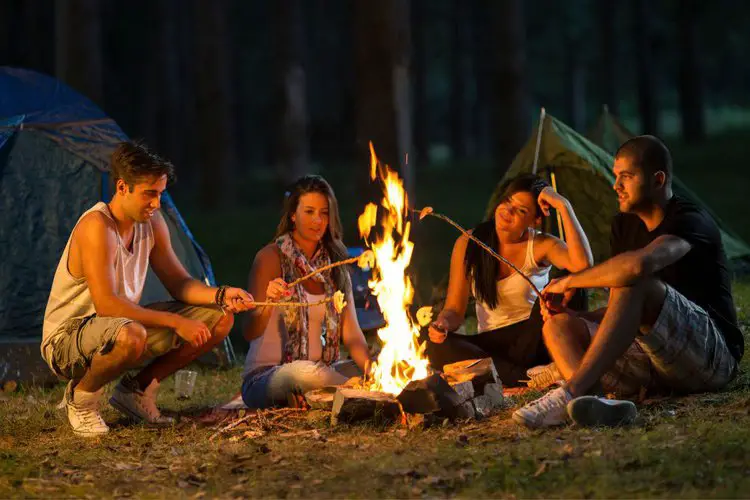
For an overnight hiking trip, you’ll need to pack more gear to ensure you have everything you need to camp out in the wilderness. Here’s a list of essentials to consider:
- Tent and sleeping bag – A lightweight, sturdy tent and sleeping bag are essential for a comfortable night’s sleep.
- Water filter – Bring a water filter or purification tablets to ensure you have access to clean drinking water.
- Food – Plan your meals carefully and pack lightweight, high-energy food such as freeze-dried meals, energy bars, and trail mix.
- Cookware – Bring a lightweight cooking stove and pot to prepare your meals.
- Headlamp or flashlight – Make sure you have a reliable light source for navigating around your campsite in the dark.
- Extra clothing – Bring extra layers of clothing to keep you warm and dry, including a rain jacket, warm fleece, or lightweight jacket.
Last update on 2023-11-10 / Affiliate links / Images from Amazon Product Advertising API
Wet Weather Hikes
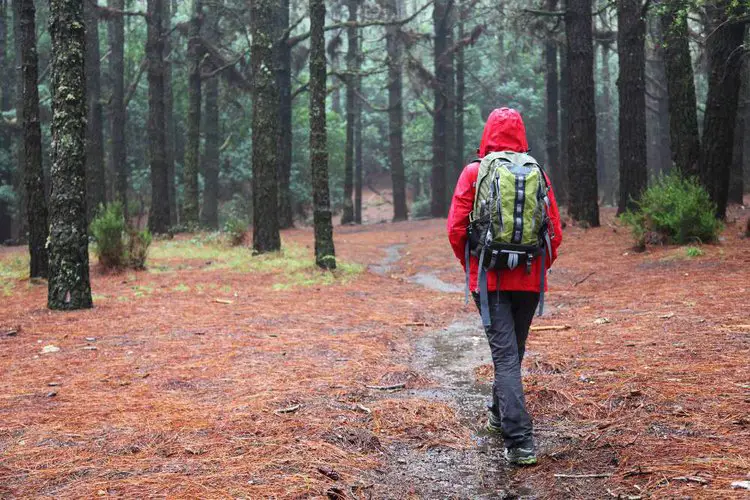
If you’re hiking in rainy or wet conditions, it’s important to pack gear that will keep you dry and warm. Here’s what we recommend bringing:
- Waterproof gear – Invest in a good-quality rain jacket, rain pants, and waterproof hiking boots.
- Extra clothing – Bring extra layers of clothing, including waterproof and breathable clothing such as a rain jacket, rain pants, and a poncho.
- Dry bags – Use dry bags to keep your gear and clothes dry, especially if you’re carrying electronics or other items that can’t get wet.
- Emergency shelter – Bring a lightweight, waterproof emergency shelter such as a bivy sack or tarp in case of emergency.
Last update on 2023-11-10 / Affiliate links / Images from Amazon Product Advertising API
Hot Weather Hikes

If you’re hiking in hot weather, it’s important to stay cool and hydrated. Here’s what you should bring:
- Water – Bring at least 1-2 liters of water per person, depending on the length and difficulty of the hike.
- Sun protection – Wear a hat, sunglasses, and sunscreen to protect yourself from the sun.
- Lightweight clothing – Choose lightweight, breathable clothing that wicks away sweat and dries quickly.
- Cool-down gear – Bring a bandana or cooling towel to wrap around your neck
- Snacks – Bring high-energy snacks such as fruit, trail mix, or energy bars to keep your energy levels up.
- Navigation – Carry a map and compass or GPS device to help you stay on track.
- First-aid kit – Pack a small first-aid kit with essentials such as band-aids, antiseptic wipes, and pain relievers.
- Insect repellent – Use insect repellent to avoid being bitten by mosquitoes or ticks.
Last update on 2023-11-10 / Affiliate links / Images from Amazon Product Advertising API
Multi-Day Hikes
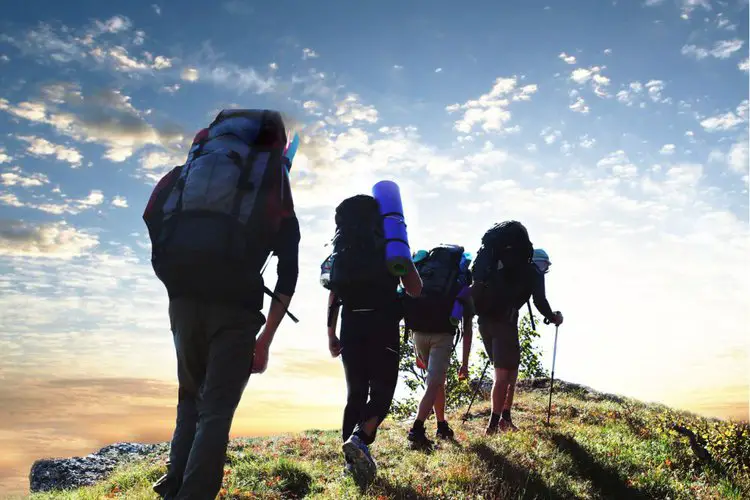
For multi-day hikes, you’ll need to pack more gear to ensure you have everything you need for an extended period of time. Here’s what we recommend bringing:
- Backpack – Use a sturdy backpack with plenty of room for your gear and supplies.
- Water – Bring a water filter or purification tablets to ensure you have access to clean drinking water.
- Food – Plan your meals carefully and pack lightweight, high-energy food such as freeze-dried meals, energy bars, and trail mix.
- Cookware – Bring a lightweight cooking stove and pot to prepare your meals.
- Tent and sleeping bag – A lightweight, sturdy tent and sleeping bag are essential for a comfortable night’s sleep.
- Headlamp or flashlight – Make sure you have a reliable light source for navigating around your campsite in the dark.
- Extra clothing – Bring extra layers of clothing to keep you warm and dry, including a rain jacket, warm fleece, or lightweight jacket.
- Navigation – Carry a map and compass or GPS device to help you stay on track.
- First-aid kit – Pack a small first-aid kit with essentials such as band-aids, antiseptic wipes, and pain relievers.
- Hygiene items – Pack biodegradable soap, a toothbrush, and toothpaste to keep yourself clean and fresh.
- Emergency shelter – Bring a lightweight, waterproof emergency shelter such as a bivy sack or tarp in case of emergency.
Last update on 2023-11-10 / Affiliate links / Images from Amazon Product Advertising API
Hiking on Different Terrains
The type of terrain you’ll be hiking on also affects the type of gear you’ll need. Here are some items to consider when hiking on different terrains:
Rocky terrain

When hiking on rocky terrain, you’ll want to wear sturdy hiking boots with good ankle support. Trekking poles can also be helpful for stability on uneven surfaces.
- Built to Last: Whether you're hiking on rugged terrain or snowshoeing on fresh powder, you need...
- Lightweight: These hiking poles are crafted with strong aircraft-grade 7075 aluminum, tougher than...
- Adjustable: Set to your desired height in seconds, from the 54" max height down to just 24.5" when...
Last update on 2023-11-10 / Affiliate links / Images from Amazon Product Advertising API
Consider bringing a first-aid kit with supplies for treating cuts and scrapes, as well as gloves to protect your hands when scrambling over rocks.
Sandy terrain
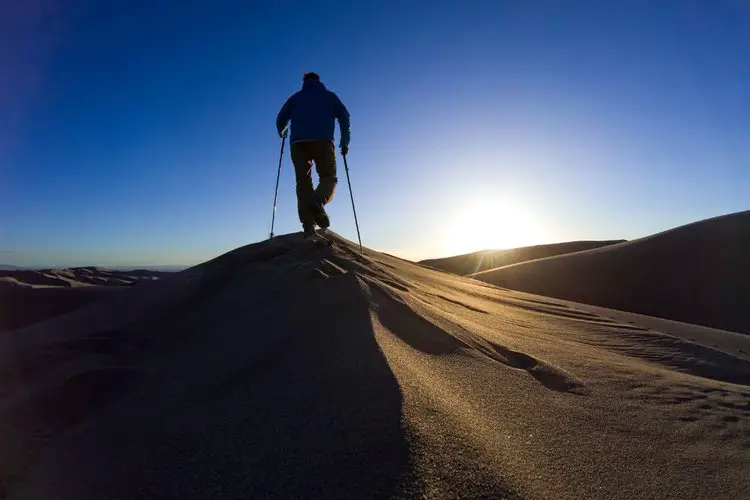
Hiking on sandy terrain can be tough on your feet and ankles. Wear lightweight, breathable shoes or sandals that will allow sand to easily escape.
Gaiters can also help keep sand out of your shoes. Consider bringing a small hand shovel to dig out a comfortable sitting spot or a shelter in the sand.
Last update on 2023-11-10 / Affiliate links / Images from Amazon Product Advertising API
Mountainous terrain
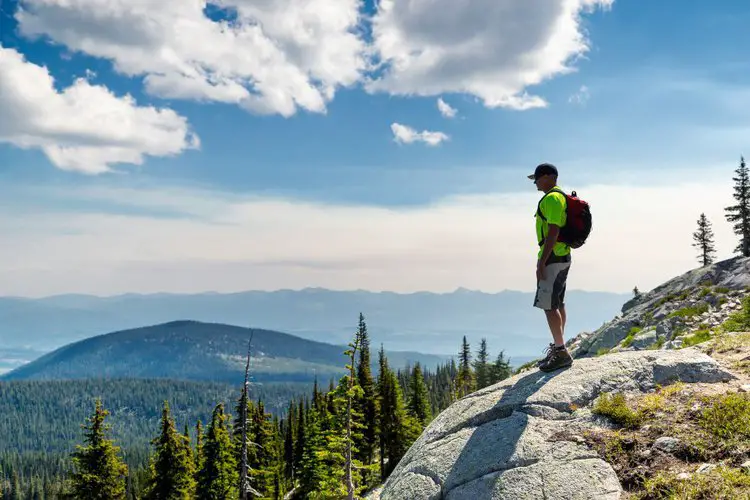
Hiking in the mountains requires sturdy hiking boots with good ankle support and trekking poles for stability.
Last update on 2023-11-11 / Affiliate links / Images from Amazon Product Advertising API
Bring extra layers of clothing, as temperatures can change rapidly at higher elevations. A hat with a wide brim and sunglasses will protect your face and eyes from the sun.
Bring plenty of water and snacks, as hiking at higher elevations can be physically demanding.
Forest terrain
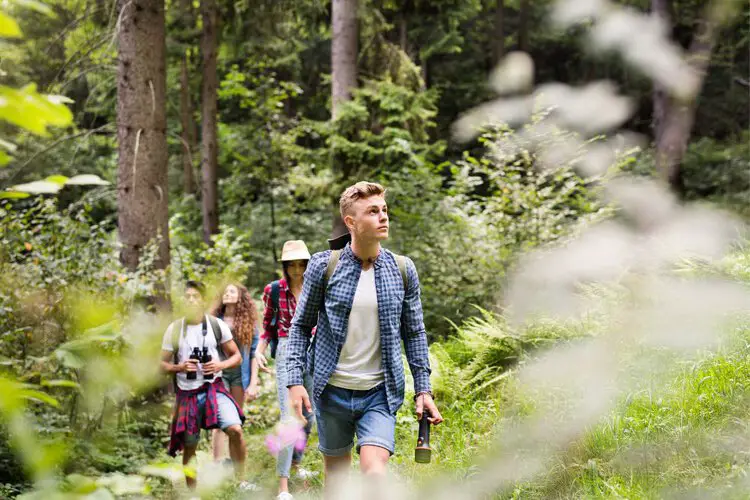
Hiking in the forest requires sturdy hiking boots with good ankle support and insect repellent to protect against mosquitoes and ticks.
Consider bringing a map and compass or GPS device to help navigate through densely forested areas. A whistle can also be useful for signaling if you get lost.
Last update on 2023-11-10 / Affiliate links / Images from Amazon Product Advertising API
Desert terrain
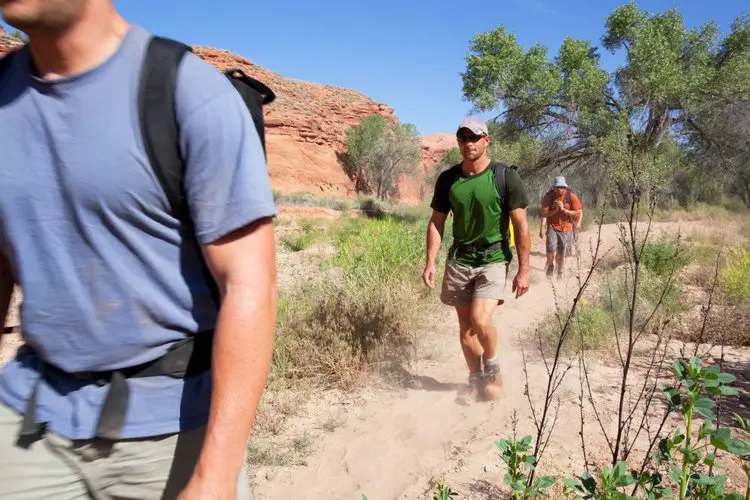
Hiking in the desert requires protective clothing, including a hat, sunglasses, and lightweight, long-sleeved clothing to protect against the sun’s harmful rays.
Last update on 2023-11-10 / Affiliate links / Images from Amazon Product Advertising API
Bring plenty of water and electrolyte replacement tablets to stay hydrated. Consider bringing a first-aid kit with supplies for treating heat-related illnesses, such as sunstroke or dehydration.
Conclusion
No matter what type of terrain you’ll be hiking on, it’s important to bring the right gear and supplies to ensure your safety and comfort.
Consider the specific challenges of the terrain, such as rocky, sandy, mountainous, forested, or desert terrain, when choosing what to pack in your hiking backpack.
With the right gear, you’ll be able to enjoy a safe and comfortable hike on any terrain.

